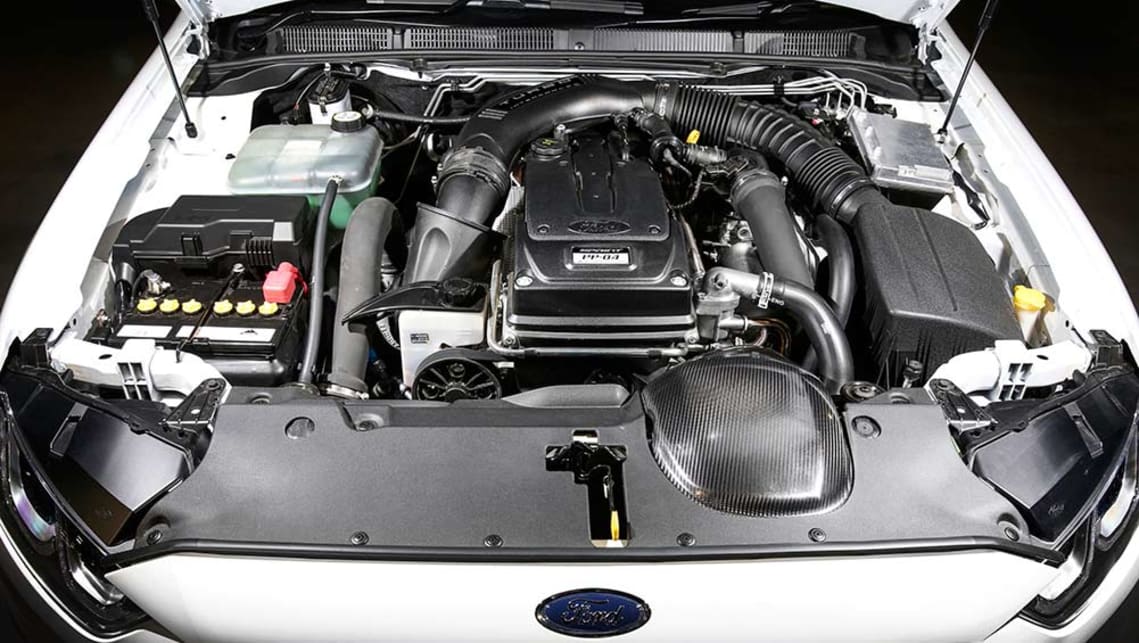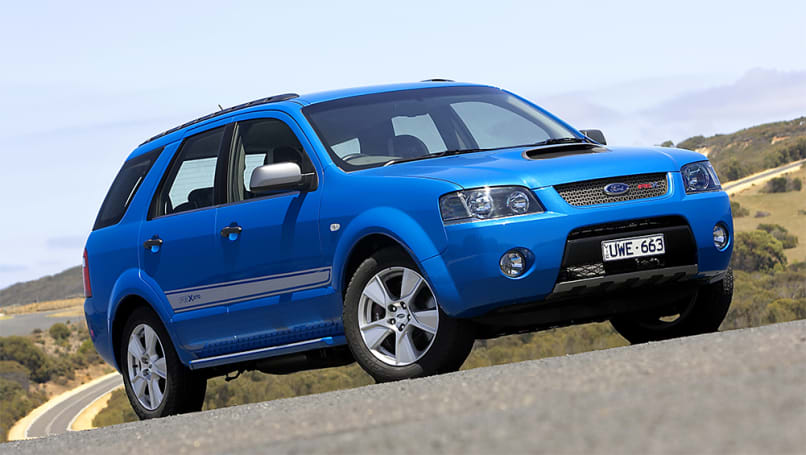
Are wheel spacers legal in Australia?
Are wheel spacers legal in Australia? No, wheel spacers are not legal in...
Browse over 9,000 car reviews

When a Ford six-cylinder engine earns a greater performance reputation than the V8s it sold alongside, and is also embraced by the aftermarket to the point where it’s being fitted to Holdens (not to mention everything in between) you know you’re looking at a landmark powerplant. And the engine in question is Ford’s in-line DOHC six-cylinder code-named Barra (short for Barramundi, a prized indigenous sport fish).
The other thing the Barra motor has in its favour is its evergreen status, especially since its launch date of mid-2002 makes it officially 20 years old about now. That includes a big reputation for long-life, reliability and the ability to cope with tuning methods including turbocharging. But what is a Barra engine when you start digging deeper?
The Barra was the work of a group of Ford Australia and Tickford engineers in the very early part of this century, who were charged with coming up with a replacement for the 4.0-litre SOHC six-cylinder that had been fitted to Falcons from 1988 (EA) to 2002 (AU).
By retaining most of the bottom end (already well proven tech) the development team came up with a double overhead cam (DOHC) cylinder head with four valves per cylinder and electronic fuel-injection. Not only was the new layout much smoother than before, it revved well, was just as efficient (despite making more power and torque) and catapulted Ford’s family sedans and wagons into the new millennium in a refinement sense.
Debuting in the BA Ford Falcon of 2002, the Barra was also immediately available as a turbocharged unit in the XR6 Turbo models which soon became a huge hit thanks to their performance and sporty feel. In fact, the Barra tag was also applied to a locally-developed three-valve-per-cylinder variant of the 5.4-litre V8 engine, but the six-cylinder was such a success, the V8 is the forgotten Barra.
So, what cars had the Ford Barra engine? From BA, the Barra was fitted to every last six-cylinder Falcon, Fairlane, LTD, or Territory SUV that Ford made here. As well as the standard non-turbo petrol variants, there were also turbocharged versions as well as dedicated LPG engines initially aimed at the taxi and fleet markets.
Power increased steadily across the engine’s lifespan, starting with 182kW in the BA model and moving to 195kW for the very last of the naturally aspirated variants in the FG-X model of 2016. In turbocharged form, the Barra initially made 240kW in the BA and topped out with 325kW in the FG XR6 Sprint which was badged as an FPV. FPV made good use of the Barra Turbo over the years with models including the Force 6 and Territory Turbo-based F6X.

Although the Barra was a new engine for 2002, it can actually trace its origins right back to the very first Falcons made in Australia. The bore-centres, for instance, are the same across all six decades of local Ford sixes and the cylinder block has always been made of cast-iron, even though Ford switched to an optional alloy cylinder head at the start of the 1980s. But beyond that, the Barra engine differences make it a pretty modern unit, even if it took until 2002 to drag Ford kicking and screaming into the world of multi-valves and twin-camshafts.
In service, the Barra 4.0-litre has proven itself to be tough and long-lived. The major Ford Barra engine problems mainly concern the valve springs in very early examples which can fail and oil pump gears which were also a tiny bit prone to failure. Beyond that, however, the Barra is able to take large amounts of turbo-boost without flinching and, for that reason, has become the darling of the performance in-line six world.

In fact, the Barra is seen as a genuine alternative to other high-performance sixes from BMW, Nissan and Toyota and has been used to repower everything from four-wheel-drives such as Toyota LandCruisers and Nissan Patrols to drag-racing cars and even Holdens. It’s also popular among the retro-tech crowd who like old cars – such as the Ford Mustang – with modern drivelines.
In a competition engine sense, the Barra also delivers. The strong architecture means it can handle huge power-ups, and 600kW is quite a realistic target. By adding stronger valve springs, a huge turbo, and an electronic tune to harmonise it all, big numbers have been produced on stock bottom ends. Ramp up to a fully 'built' bottom end, reduce the compression ratio and the sky’s the limit in both power and budget terms.

With that in mind, there’s no simple answer to how long do Barra engines last? But rest assured, it’s a lot longer than many of its competitors and a well serviced Barra will go for years and maybe even 400,000km.
It's for these reasons that a whole industry has sprung up to offer Barra conversion kits. These kits allow the Barra to find a home in many different makes and models, such is the popularity of the engine.

Downsides are mainly to do with the Ford Barra engine dimensions. It’s a tall, long engine with its cylinders all in a row, and the DOHC head is also quite large and carried high thanks to the long-stroke design. It’s also heavy and the sheer weight of the thing is a black mark, making it less than perfect for a swap into a smaller, lighter car.
Finding a Barra now is not as simple as sourcing popular V8s, as there isn’t the crate engine industry to support to a Ford six. But you will find second-hand Barra engines for sale in the classifieds and even if you buy a worn unit, a reconditioned Barra engine will not break the bank relative to other powerplants.

A rebuildable engine can be had for as little as a few hundred dollars. The aftermarket also caters to the Barra in a big way, and there’s not much that can’t be sourced, including many high-performance replacement parts.
Is it the best locally developed and built engine this country has ever produced? Almost certainly.
Comments